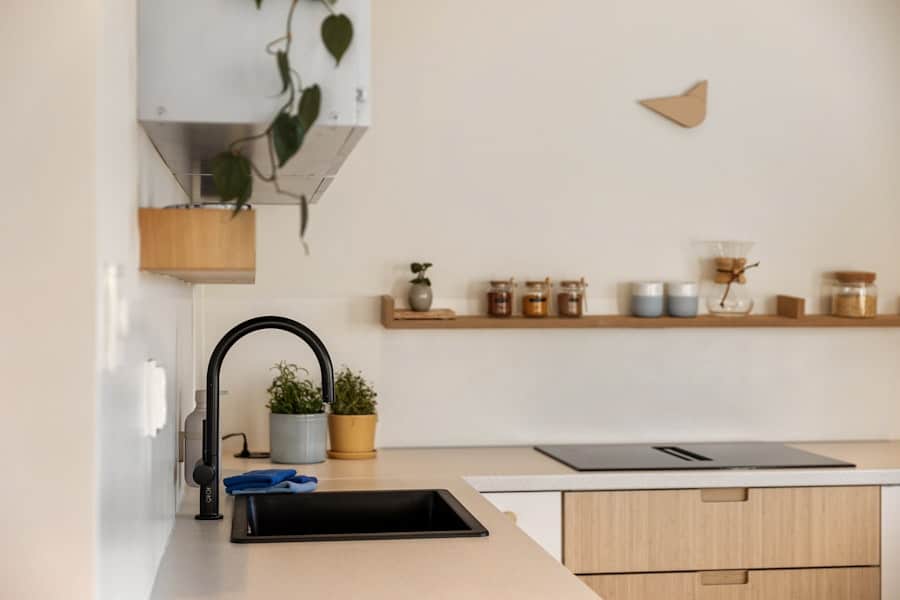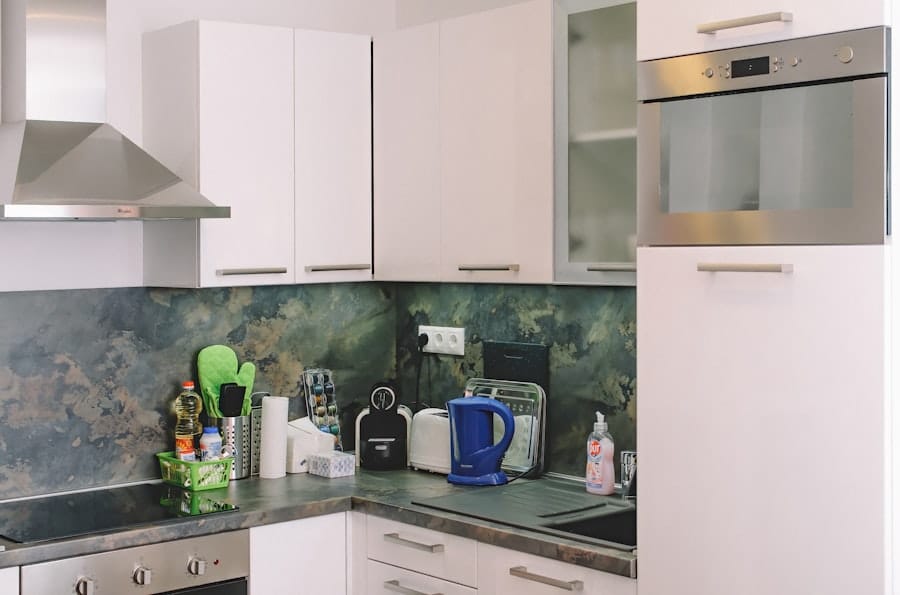The advent of artificial intelligence (AI) has revolutionized numerous sectors, and the culinary world is no exception. AI-driven smart kitchens represent a significant leap forward in how we approach cooking, meal preparation, and overall kitchen management.
The integration of AI into kitchen environments allows for a level of personalization and automation that was previously unimaginable, transforming the way individuals and families interact with food. Smart kitchens utilize a combination of IoT (Internet of Things) devices, machine learning algorithms, and user-friendly interfaces to create a seamless cooking experience. From smart refrigerators that monitor inventory to AI-powered recipe suggestions based on available ingredients, these kitchens are designed to cater to the needs and preferences of their users.
As the demand for convenience and efficiency in meal preparation continues to grow, the role of AI in smart kitchens is becoming increasingly prominent, paving the way for a new era of culinary innovation.
Key Takeaways
- AI-driven smart kitchens use artificial intelligence to automate and optimize various kitchen tasks and processes, making cooking and meal planning more efficient and convenient.
- Artificial intelligence plays a crucial role in meal planning by analyzing dietary preferences, nutritional needs, and inventory to suggest personalized recipes and create shopping lists.
- Automated meal planning in smart kitchens offers benefits such as time savings, reduced food waste, improved nutrition, and simplified grocery shopping.
- Challenges and limitations of AI-driven smart kitchens include the need for accurate data input, potential errors in recipe recommendations, and the reliance on technology for everyday tasks.
- The integration of smart appliances and AI technology in kitchens allows for seamless communication and coordination, enabling appliances to work together and adapt to user preferences.
- Privacy and security concerns in AI-driven smart kitchens revolve around data protection, potential hacking of connected devices, and the collection of personal information by AI systems.
- The future of AI-driven smart kitchens holds potential for innovations such as predictive maintenance of appliances, personalized cooking assistance, and enhanced connectivity with other smart home devices.
- In conclusion, embracing the potential of AI-driven smart kitchens can lead to more efficient and enjoyable cooking experiences, but it is important to address challenges and concerns to ensure a safe and reliable integration of AI technology in the kitchen.
The Role of Artificial Intelligence in Meal Planning
Customized Meal Recommendations
By leveraging vast databases of recipes and nutritional information, AI systems can recommend meals that align with individual tastes while also considering health goals.
Adaptive Learning and User Satisfaction
Moreover, AI-driven meal planning tools can learn from user interactions over time. As individuals provide feedback on suggested recipes or indicate their satisfaction with certain meals, the AI refines its recommendations to better suit their evolving tastes. This adaptive learning process not only enhances user satisfaction but also encourages individuals to explore new cuisines and ingredients they may not have considered otherwise.
Enhancing Culinary Experiences
The ability to personalize meal planning in this manner represents a significant advancement in how technology can enhance our culinary experiences.
Benefits of Automated Meal Planning in Smart Kitchens

The benefits of automated meal planning in smart kitchens extend beyond mere convenience; they encompass health, sustainability, and economic advantages as well. One of the most significant advantages is the reduction of food waste. By accurately tracking inventory and suggesting recipes based on what is available, AI can help users utilize ingredients before they spoil.
This not only saves money but also contributes to more sustainable cooking practices by minimizing the environmental impact associated with food waste. Additionally, automated meal planning can promote healthier eating habits. With AI’s ability to analyze nutritional content and suggest balanced meals, users are more likely to consume a varied diet rich in essential nutrients.
For example, an AI system might suggest a meal that incorporates a variety of vegetables, lean proteins, and whole grains, ensuring that users receive a well-rounded intake of vitamins and minerals. This proactive approach to nutrition can lead to improved overall health and well-being.
Challenges and Limitations of AI-Driven Smart Kitchens
Despite the numerous advantages associated with AI-driven smart kitchens, several challenges and limitations must be addressed for widespread adoption. One significant concern is the reliance on technology and the potential for system failures. If an AI system malfunctions or experiences connectivity issues, it could disrupt meal planning and preparation processes, leading to frustration for users who depend on these technologies for their daily cooking needs.
Another challenge lies in the complexity of user preferences and dietary restrictions. While AI can analyze data and make recommendations based on patterns, it may struggle to fully understand nuanced preferences or cultural considerations. For instance, an individual may have specific aversions or allergies that are not easily categorized within a standard database.
This limitation highlights the need for continuous improvement in AI algorithms to ensure they can accommodate diverse dietary needs effectively.
Integration of Smart Appliances and AI Technology
The integration of smart appliances with AI technology is a cornerstone of the modern smart kitchen. Devices such as smart ovens, refrigerators, and dishwashers are designed to communicate with one another and with central AI systems, creating a cohesive cooking environment. For example, a smart oven can receive instructions from an AI meal planner regarding cooking times and temperatures based on selected recipes.
This level of integration not only simplifies the cooking process but also enhances precision in food preparation. Furthermore, smart appliances equipped with sensors can provide real-time feedback to users. A smart refrigerator might alert users when certain items are running low or nearing their expiration dates, while a smart scale can help ensure accurate ingredient measurements during cooking.
This interconnectedness fosters an intuitive cooking experience where users can focus more on creativity and enjoyment rather than logistical challenges.
Privacy and Security Concerns in AI-Driven Smart Kitchens

Privacy and Security Concerns in Smart Kitchens
As with any technology that collects and processes personal data, privacy and security concerns are paramount in AI-driven smart kitchens. These systems often require access to sensitive information such as dietary preferences, shopping habits, and even biometric data in some cases. The potential for data breaches or unauthorized access raises significant questions about how this information is stored and protected.
Securing Smart Kitchen Devices
To mitigate these risks, manufacturers must prioritize robust security measures when designing smart kitchen devices. This includes implementing encryption protocols for data transmission, regular software updates to address vulnerabilities, and transparent privacy policies that inform users about how their data will be used.
User Education and Best Practices
Additionally, users should be educated on best practices for securing their devices, such as using strong passwords and enabling two-factor authentication where available. By taking a proactive approach to security, users can help protect their personal data and ensure a safe and enjoyable smart kitchen experience.
The Future of AI-Driven Smart Kitchens: Potential Innovations and Developments
The future of AI-driven smart kitchens holds immense potential for further innovations that could redefine culinary experiences. One area ripe for development is the incorporation of augmented reality (AR) into cooking processes. Imagine wearing AR glasses that overlay step-by-step cooking instructions directly onto your kitchen workspace or provide visual cues for ingredient measurements.
This immersive technology could enhance learning experiences for novice cooks while making complex recipes more accessible. Another promising avenue is the integration of advanced robotics into smart kitchens. Robotic chefs capable of performing intricate cooking tasks could revolutionize meal preparation by automating labor-intensive processes such as chopping vegetables or stirring sauces.
These robots could work alongside human cooks, allowing for greater efficiency while maintaining the artistry of cooking.
Embracing the Potential of AI-Driven Smart Kitchens
As we stand on the brink of a culinary revolution driven by artificial intelligence, it is essential to embrace the potential that AI-driven smart kitchens offer. The ability to personalize meal planning, reduce food waste, and enhance overall cooking experiences presents an exciting opportunity for individuals and families alike. While challenges such as privacy concerns and technological limitations exist, ongoing advancements in AI technology promise to address these issues over time.
The future of cooking is not just about convenience; it is about creating meaningful connections with food through innovative technologies that empower us to make informed choices about our diets. As we continue to explore the possibilities within smart kitchens, we can look forward to a world where cooking becomes not only easier but also more enjoyable and sustainable.
In a related article discussing the importance of user experience in software development, the article highlights the significance of creating intuitive and user-friendly interfaces for AI-driven smart kitchens with automated meal planning. By prioritizing user experience, developers can ensure that these innovative technologies are accessible and easy to use for consumers. This emphasis on UX design can enhance the overall functionality and efficiency of smart kitchen systems, ultimately improving the user experience and satisfaction.
FAQs
What is an AI-driven smart kitchen?
An AI-driven smart kitchen is a kitchen equipped with artificial intelligence technology that can automate various tasks such as meal planning, grocery shopping, and cooking.
How does automated meal planning work in a smart kitchen?
Automated meal planning in a smart kitchen involves using AI algorithms to analyze dietary preferences, nutritional needs, and available ingredients to create personalized meal plans.
What are the benefits of AI-driven smart kitchens with automated meal planning?
Some benefits of AI-driven smart kitchens with automated meal planning include time savings, reduced food waste, improved nutrition, and convenience in meal preparation.
What are some examples of AI-driven smart kitchen appliances?
Examples of AI-driven smart kitchen appliances include smart refrigerators that can track food inventory and suggest recipes, smart ovens that can adjust cooking times and temperatures, and smart cooking devices that can be controlled remotely.
What are the potential challenges of AI-driven smart kitchens with automated meal planning?
Challenges of AI-driven smart kitchens with automated meal planning may include privacy concerns related to data collection, the need for reliable internet connectivity, and the initial cost of purchasing smart kitchen appliances.

